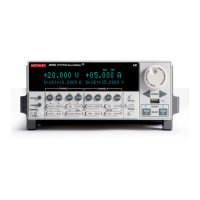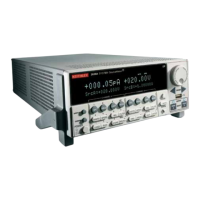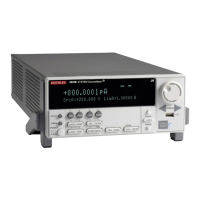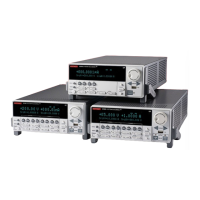2600S-901-01 Rev. C / January 2008 Return to Section Topics 2-47
Series 2600 System SourceMeter® Instruments Reference Manual Section 2: TSP Programming
print(ratio)
Output of code above:
7
12
5
-1
0.66666
Tables/arrays
TSL makes extensive use of the data type “table,” which is essentially a very flexible array-like
data type.
Define a table:
atable = {1, 2, 3, 4} -- A table with four elements, which are numbers.
Let's print it:
i = 1 -- Tables are indexed on one, NOT zero.
atable[index] True if there is an element at that index; nil is returned otherwise.
0 does NOT evaluate to false - only nil does.
while atable[i] do
print (atable[i]) -- Index into table using a number.
i = i + 1
end
Output of code above:
1
2
3
4
Tables can be indexed using element names instead of numeric indices. Since functions are first-
class variables, tables can be used to create "pseudo-classes." Classes are often used in object-
oriented programming.
Below is a table used to create a circle pseudo-class. It has 3 elements:
clr: a string containing the color of the circle
diam: a number containing the diameter of the circle
setdiam: a function, or method, used to change the diameter

